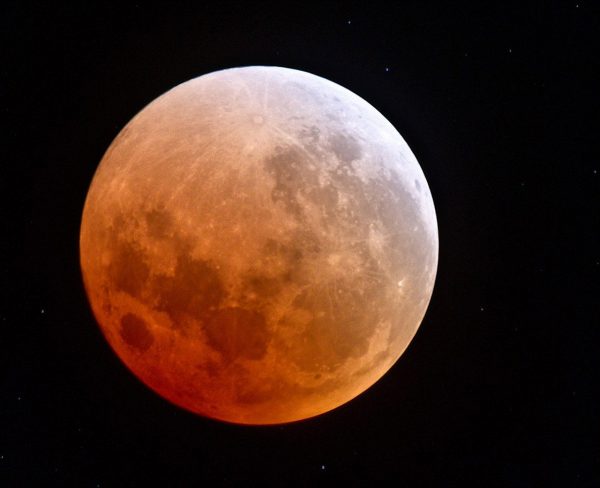
While total solar eclipses are famously limited to a small area, leading some to travel the world chasing a few minutes of darkness, lunar eclipses are visible to nearly anywhere on the night side of the Earth for a couple of hours of its duration. Not everybody gets the same view – some places will not have the moon rise until the eclipse is already underway, and others will have it hug the horizon too closely to make it easy to watch. On the 31st of January, Perth had some of the best seats in the house for a full blood moon eclipse, and nearly 100 guests took in the view from the grounds of the Observatory while a rather larger number watched over their shoulders via the internet.
For those there in person, it was a relaxed and low key affair, with folding chairs and bean bags scattered around the viewing area as the slow-motion spectacle unfolded overhead. Observatory volunteers circulated amongst the crowd to answer any questions, and several telescopes were set up to provide a closer look. The advance of the faint outer or penumbral, the shadow was already underway at moonrise Perth time, but the main event started at 7:48 pm when the dark central, or umbral, the shadow began to take a visible bite out of the edge of the lunar disc. As the shadow advanced and the moon became darker the anticipated red colour began to appear, caused by light rays being bent through Earth’s atmosphere, the same phenomenon that gives the red light of sunrise and sunset. By 8:50 the umbral coverage was total, and the crowd enjoyed the blood moon in all its glory for about 80 minutes until the moon reached the other edge of Earth’s shadow and the process ran in reverse until the last nibble at the edge of the disc disappeared at 11:11 pm. The next total lunar eclipse visible from Perth will be in July, but not until the small hours of the morning, so the timing of this one was an ideal chance for many families to share with their children, who were impressed with the show.
Many other people around the world were able to share the sight, as Observatory volunteers set up a live stream of the entire event that ran on timeanddate.com, with added commentary from the website staff. Over 1.2 million people connected to the stream over the course of the eclipse, and at one point the video was the third-ranked page on Google, beating out some of the biggest stars of YouTube. Throughout its history, Perth Observatory has often found itself to be the right site in the right place for important events, from early tests of the theory of relativity to the co-discovery of the rings of Uranus, but this sets a new high watermark for the observatory being there at the right place for so many people at once.





